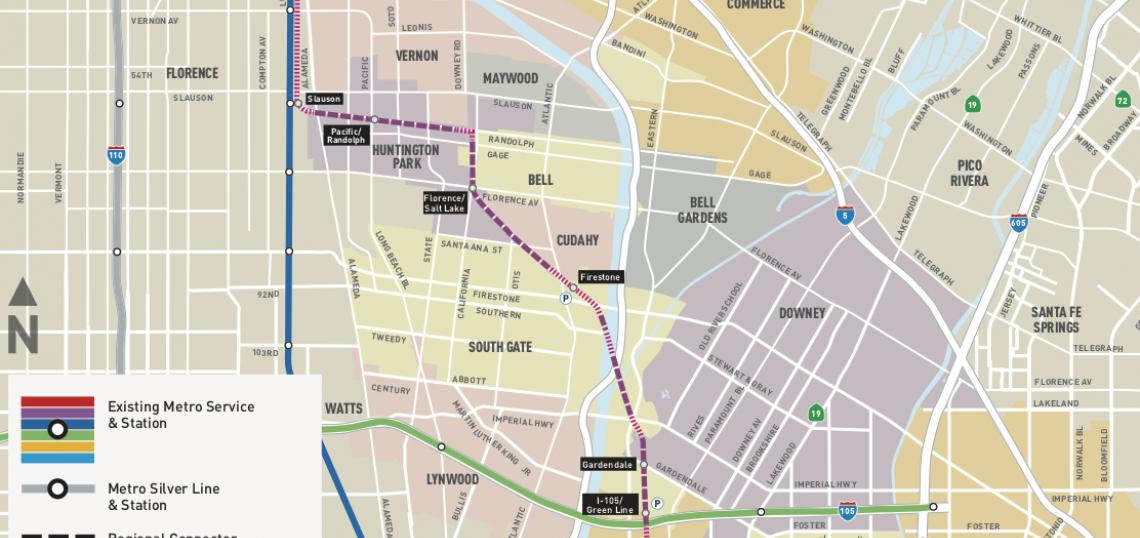A report given yesterday to the Metro Board's Planning and Programming Committee opens broaches the possibility of delivering the West Santa Ana light rail line in phases.
As part of the project's in-progress environmental impact report, Metro staff is studying two interim operating segments for the West Santa Ana Branch - in addition to the full 19-mile corridor linking Artesia to Downtown Los Angeles.
The first segment would span between the line's southern terminus at Pioneer Boulevard in Artesia and the proposed connection to the Green Line in the median of the I-105 Freeway. The second segment would extend service north to Slauson Avenue - where the West Santa Ana branch would connect with the Blue Line (soon-to-be the A Line).
"Metro staff believe the best way to deliver the entire project between Artesia and DTLA is to build it in segments," reads a post on Metro's blog The Source. "It’s a common approach for Metro, which has built many of its project in phases, including the Blue Line, Expo Line and Gold Line and the Purple Line Extension that is under construction. This strategy allows rail lines to be built as funding becomes available, while also delivering benefits to the public as soon as possible."
Employing interim operating segments could allow for service on the West Santa Ana line to begin by 2028. The full 19-mile corridor is not expected to be completed until 2041, per the Measure M expenditure plan.
However, Metro is taking steps to accelerate delivery of the full project, potentially through partnerships with private sector companies. The agency has received several proposals regarding the West Santa Ana branch, which has $4 billion in cumulative funding from Measure M.
But before construction can occur, the Metro Board must select a route for the project. While its path through southeast Los Angeles County is restricted to historic right-of-ways, staff is studying two potential northern termini for the project: Union Station and 7th Street/Metro Center Station. Both alternatives are expected to generate approximately 80,000 daily riders.
The project's draft environmental impact report is scheduled to be released in December2020, with the Board expected to select a locally preferred alternative by April 2020. A groundbreaking is anticipated in 2022.
- West Santa Ana Branch (Urbanize LA)






